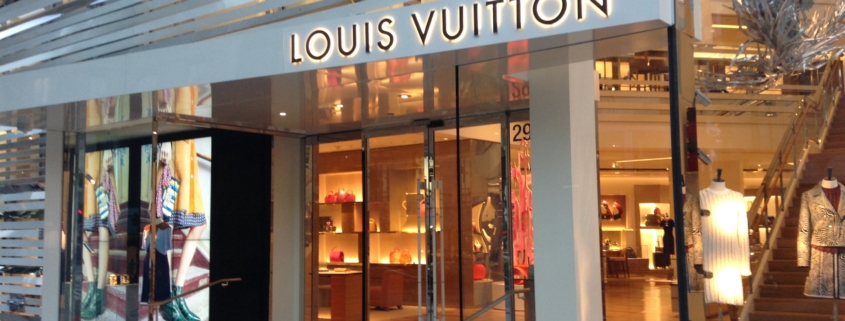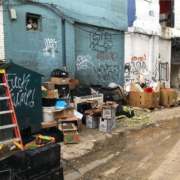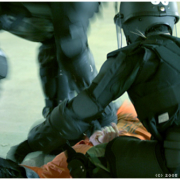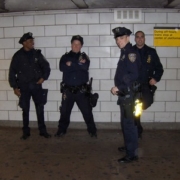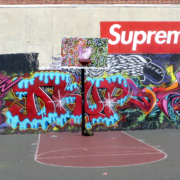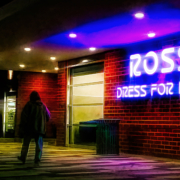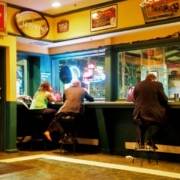What’s causing the trend in flash mobs engaging in “smash-and-grab” thefts of luxury goods & how might we respond?
Over the past few weeks there’s been a considerable amount of news media coverage of flash mob “smash-and-grabs,” also known as flash robs, of luxury items from retail stores throughout the United States.
True, stores like Best Buy, CVS, and Home Depot have been subject to this kind of victimization, but luxury items like clothing, accessories, and jewelry stolen from stores like Louis Vuitton represent a special case.
As part of this story, journalists and pundits have emphasized the brazen nature of these crimes. Although these incidents are shocking and terrifying to store personnel, patrons of the stores, and television viewers, some of this dialogue is resembling a crime-reporting spree, largely because we don’t have any national data yet indicating that there is an uptick in this type of crime.
Also we don’t really know right now if the majority of the goods that are stolen are being used for personal consumption, being given to girlfriends, spouses, or mothers, or they are being sold. In other words, there are a lot of unknowns right now with respect to this type of crime.
Nevertheless, why is this taking place? There may be at least six reasons, from least to most important, why the smash-and-grab of luxury items are occurring now.
First, the thieves may think that they can easily get away with these types of crimes. From the CCTV footage broadcast in news stories, it appears that many of the thieves don’t seem to be too sophisticated. They are not completely masked, and the make, model, color, and license plate numbers of many of their vehicles are easily identified. Thus they are relatively easily tracked. Also some states (e.g., California’s passage of Prop 47), have raised the dollar amount for goods that are stolen to be considered to be a felony rather than a misdemeanor. This has led some people to mistakenly believe that this has led to an increase in thefts under $1000 and that people who engage in this activity are not prosecuted. This is not true.
Second, people who commit smash-and-grabs may be bored. In other words, they may believe that alternative activities that will interest or excite them are not available or have become dull. In this kind of scenario the crime is committed not because people are using the proceeds to feed a family. It’s for the sneaky thrills.
Third, there may be a contagion effect. News and social media coverage of these incidents may stimulate those so inclined to engage in smash-and-grabs to finally commit them.
Fourth, a number of almost frictionless methods (e.g., E-bay, craigslist, and other on-line third party sellers), and communication methods (e.g., DM via social media apps) exist that enable and facilitate thieves to sell these goods.
Fifth there is a greater availability of luxury goods for sale. Almost every big city now have luxury retailers as standalone stores, or they sell their goods through department stores (e.g., Bloomingdales, Nordstrom’s, or Macys) that operate like retail platforms
Sixth and most importantly, there is a high demand for these kinds of big ticket goods, tied to advertising, merchandizing, and street culture. In all likelihood, if there was not such a demand people would not steal luxury items.
The next important question is probably how can we better prevent smash-and-grabs from occurring?
There are about seven ways we can minimize these types of thefts. And many retail operations do this already:
• Place more items under better lock and key.
• Install more CCTV inside and outside the stores.
• More identification/serial numbers affixed to the items for sale.
• Die packs like banks use.
• More tagging of items.
• Increase the number of security personnel, and engage in more security protocols.
• More arrests of individuals who commit smash-and-grabs.
• Most importantly, and more difficult is educating the public and consumers, in particular, about how brands, regardless of whether they are luxury or not, work. Brands get into our heads. They stand for something.The goods, may not be of superior quality, but they are associated with social status. Perhaps understanding how this dynamic works, and creates irrational wants and needs may have a dampening effect, on retail thefts?
This is a long term strategy, not something we are going to be successful at in the short term, and thus more difficult to address before we move into the Christmas season with more shopping, etc.
Photo Credit
Mike Mozar
Louis Vuitton Store, Beverly Hills, California

